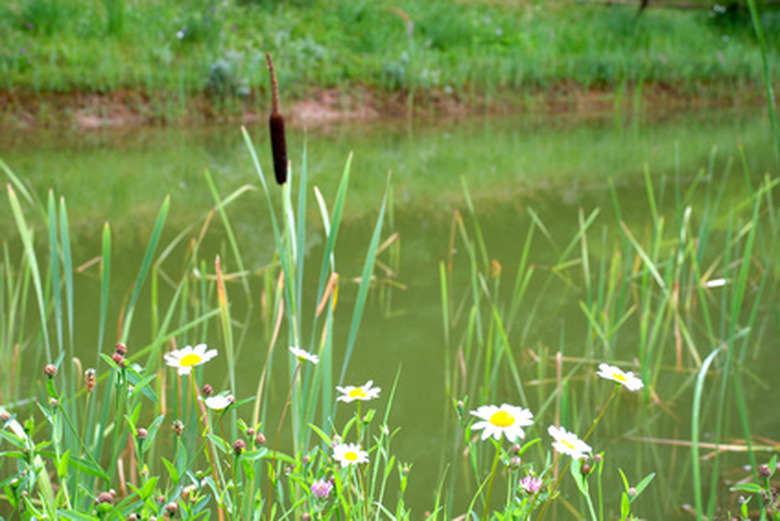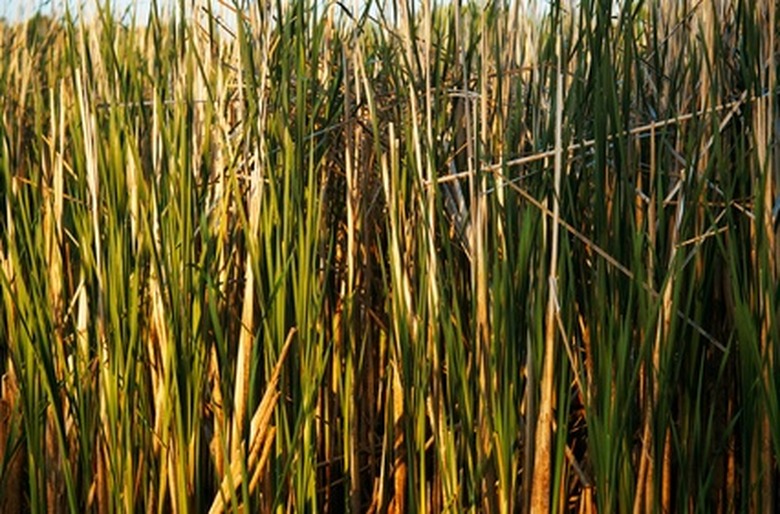Plants That Live Near Ponds
A vast array of plants make their home near ponds and other freshwater habitats. They are divided into types based on size and whether their roots and leaves are in the water, in the sediment or in the air above the water. This diverse group of aquatic plants includes floaters, submersed and emergent plant types. Common pond plants include the popular cattail and giant reed grass, both of which are easily identifiable and add texture and beauty to any garden pond.
Soft Rush
Another common plant that grows near ponds is soft rush. Soft rush is an emergent aquatic plant found in shallow water and moist soils that is often confused with sedges and grasses. It grows in dense strands and can reach heights up to 3 1/2 feet tall. The leaves are dark green with a sharp tip. Sheaths form along the base, and flowers sprout near the top of the stem. Soft rush seeds are an important source of food for many forms of wildlife.
- A vast array of plants make their home near ponds and other freshwater habitats.
- Soft rush is an emergent aquatic plant found in shallow water and moist soils that is often confused with sedges and grasses.
Cattails
As an emergent pond plant, cattails emerge from the water and are often partially submerged. They are most commonly found in low lying wetlands and boggy areas and can dominate the shoreline of shallow freshwaters. Cattails can reach heights between 5 and 10 feet. The tall, rounded leaves twist through the top with a brown, cigar-shaped flower forming at the spike. Cattails spread rapidly and should be planted with care to avoid becoming invasive in garden ponds.
Bur-Reed
Bur-reed is an emergent aquatic perennial reaching heights up to 2 feet. It is found along the edges of streams, ponds, marshes and lakes. Bur-reed leaves are smooth with a zigzag-shaped stalk. It is known for its sphere-like flower that forms at its tip. The spiny ball and smooth leaves are important sources of food for many forms of wildlife. Bur-reed forms in compact strands and needs a nutrient rich environment to thrive.
- As an emergent pond plant, cattails emerge from the water and are often partially submerged.
Giant Reed Grass
Giant reed grass is native to India but was introduced to the United States in the 1800s. As an emergent perennial, giant reed can often reach heights up to 20 feet. The leaves reach 1 foot long and are 1 to 2 inches wide. They produce flowers that are plume-like, long and erect. Giant reed is extremely fast growing and forms in dense strands. It can quickly conquest riparian regions and tolerates flooding.

